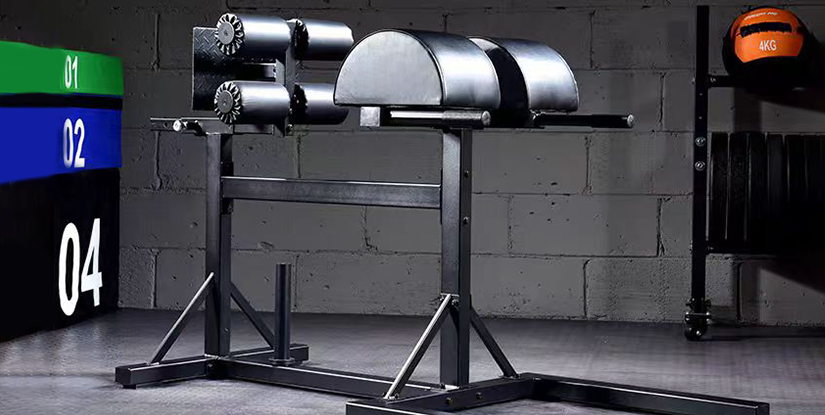One Arm Pulldown: Technique, Benefits, Programming & Variations

Introduction
The one arm pulldown is a unilateral lat-targeting exercise performed on a cable or pulley system. It isolates each side of the posterior chain, improves muscular balance, and enhances scapular control. Compared with bilateral pulldowns, the unilateral approach reduces compensatory patterns, promotes greater range of motion, and increases core stabilization demands.
Primary Muscles Worked
- Latissimus dorsi (primary)
- Terres major and posterior deltoid (synergists)
- Biceps brachii and brachialis (assistors)
- Rhomboids and middle trapezius (scapular stabilizers)
- Obliques and erector spinae (core stabilization)
Equipment and Setup
Use a single-handle attachment on a high pulley, or attach a D-handle to a cable machine. Seat height should allow the thigh pads (if present) to secure the torso. Grip the handle with a neutral or supinated hand depending on comfort and training intent. Feet are flat, knees slightly bent, and torso upright with a neutral spine.
Technique: Step-by-Step
- Start: Sit with arm extended overhead, shoulder blade upward but not shrugged. Maintain a slight arch in the low back and engage the core.
- Initiate: Pull the handle down by driving the elbow toward the hip. Focus on initiating movement from the lat rather than the forearm.
- Finish: Bring the hand to the side of the chest or upper rib cage, accentuating scapular depression and retraction at the end range.
- Return: Control the eccentric phase, allowing the arm to ascend under tension until the lat is elongated and the shoulder is slightly overhead.
- Breathing: Exhale during the concentric pull, inhale as you return to the start position.
Coaching Cues
- Think elbow to hip — pull with the elbow, not the hand.
- Keep the chest high and sternum proud to avoid forward flexion.
- Avoid shrugging; instead depress the scapula before initiating the pull.
- Control the eccentric to maximize time under tension and reduce momentum.
Common Mistakes and Corrections
- Using momentum: Reduce the load and slow the repetition to maintain strict form.
- Over-rotating the torso: Stabilize the core and allow only minimal rotation to facilitate full lat contraction.
- Elbow flare: Keep the elbow tracking toward the body to recruit the lat more effectively.
- Hand-dominant pulling: Focus on proprioception at the elbow; cue a “pull with the elbow” mentality.
Programming Guidelines
Prescription depends on goals.
- Hypertrophy: 3–4 sets of 8–12 reps per side with 60–90 seconds rest.
- Strength: 4–6 sets of 4–6 reps with heavier loads and 2–3 minutes rest, emphasizing strict tempo.
- Endurance or rehabilitation: 2–3 sets of 12–20 reps with lighter resistance and controlled tempo.
Progressions and Regressions
- Regression: Reduce weight, use a band for assisted movement, or perform two-arm pulldowns to decrease unilateral load.
- Progression: Increase load, add pauses at peak contraction, perform slower eccentrics, or integrate single-arm pulldowns into superset schemes.
- Advanced variant: Standing single-arm pulldown with anti-rotation focus to further challenge core stability.
Benefits
- Corrects left-right strength imbalances.
- Improves unilateral pulling strength for climbing, rowing, and athletic tasks.
- Enhances scapular mechanics and shoulder health when performed with proper technique.
- Increases mind–muscle connection due to focused isolation.
Safety Considerations
Maintain neutral spine alignment and avoid excessive torso lean. If you experience shoulder pain, reduce range of motion and ensure scapular mobility is sufficient. Work with a qualified coach for load progression if recovering from injury.
Sample Session Integration
Include one arm pulldowns as a primary back exercise on upper-body days or as an accessory after compound lifts. Example: After barbell rows, perform 3 sets of 8–12 reps per side to target unilateral strength and hypertrophy.
9 Quick FAQs
Is one arm pulldown better than two-arm pulldown?
It depends on goals. One-arm improves unilateral strength and balance; two-arm allows heavier loads and symmetrical development.
How many sets and reps are optimal?
For hypertrophy 3–4 sets of 8–12 reps; for strength 4–6 sets of 4–6 reps; adjust based on recovery and technique.
Can beginners perform this exercise?
Yes—start with light loads and focus on form, or use bilateral pulldowns until coordination and scapular control improve.
Does grip type matter?
Neutral or supinated grips change emphasis slightly; choose the grip that maximizes comfort and lat engagement.
How to avoid shoulder pain?
Ensure scapular mobility, avoid excessive overhead start, and stop if sharp pain occurs. Consult a professional for persistent issues.
Should I rotate the torso?
Minimal torso rotation is acceptable to increase range; avoid large twisting that turns it into a torso-dominant movement.
Which is better for core activation: seated or standing?
Standing variations increase anti-rotation demands and core activation; seated is more lat-focused and stable.
Can it fix muscle imbalances?
Yes—regular unilateral training helps reduce strength and hypertrophy asymmetries when programmed consistently.
How to progress beyond basic one arm pulldown?
Increase load, add slow eccentrics, implement paused contractions, or combine with unilateral row variations for advanced stimulus.

